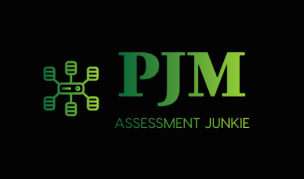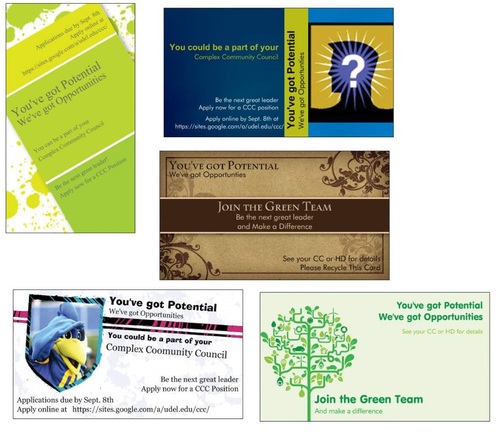You always want student recruitment for leadership positions to have a personal touch, something a mass-email or a poster just wont do.
We wanted to have something for our RAs to hand out residents during our Complex Community Councils (the hall governments for our residence hall complexes). I designed these to appeal to different students and to carry a consistent message that we carried throughout much of our marketing; “You’ve Got Potential, We’ve Got Opportunities”.
We printed these cards from VistaPrint.com and divided them up amongst the staff to hand out to students. This gave them a clear reason to walk up and mention this to people and gave us a clearer way to measure their effort to recruit students.
This year, I re-printed the cards but changed the slogan to “You’ve Got Talent, We’ve Got Opportunities”. This change to talent goes along with similar language changes we have made in our marketing and programs. The cards are all printed on recycled paper and include a request to please recycle the card through our single stream recycling.
These proved effective and were liked by staff and students alike. We always tend to over estimate the numbers we needed and when we print them in the future we will work on finding a way to make the website the same year after year so we can re-use them. The Green Team Cards (located bottom left in the picture) are reusable and we use them to recruit students throughout the year. Green Teams are student groups that focus on education, programming and advocacy regarding environmental sustainability on campus.Thanks for reading,
Paul Miller…

